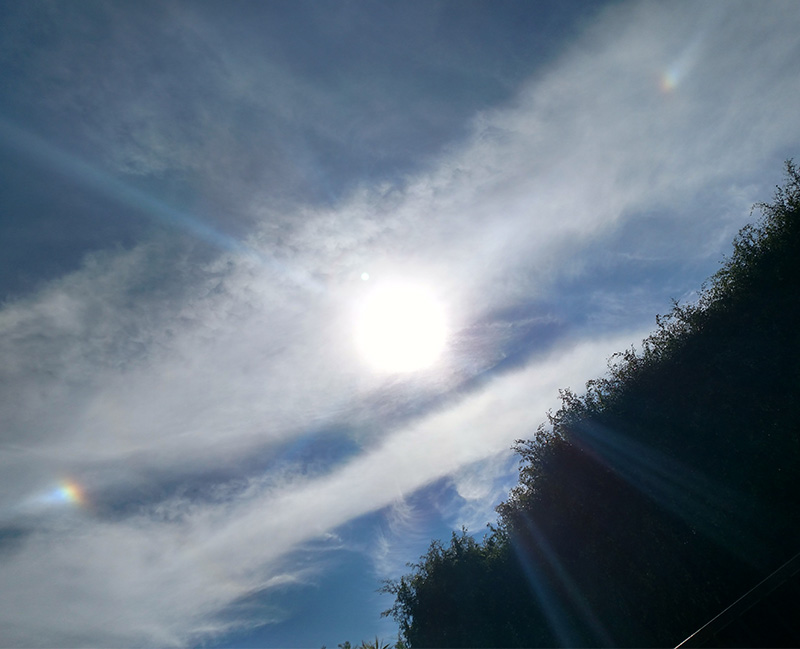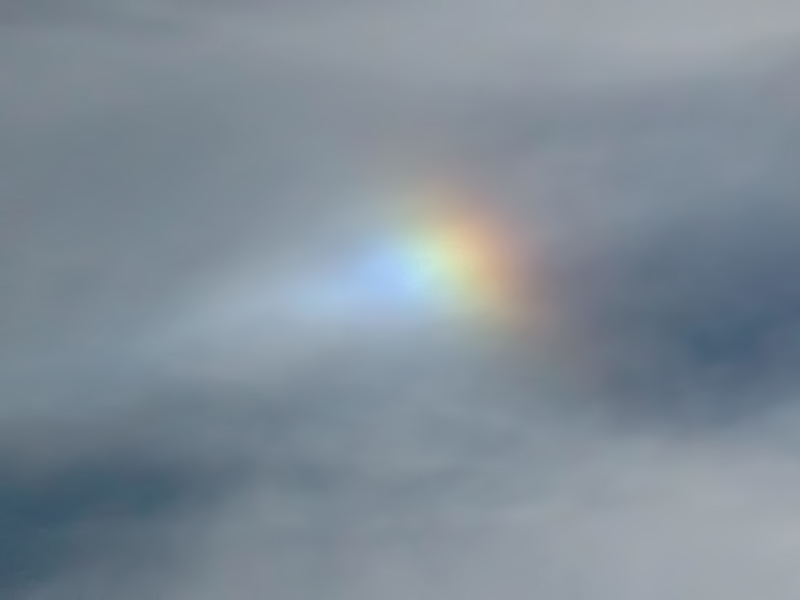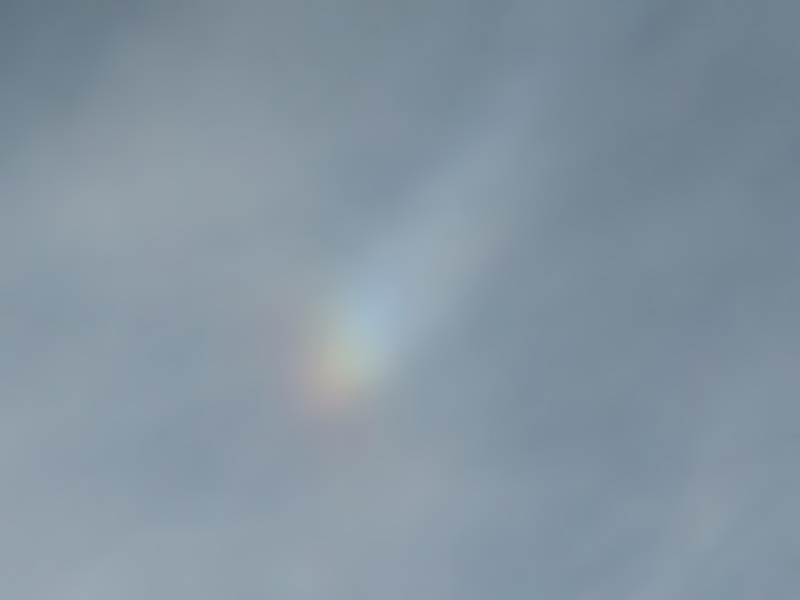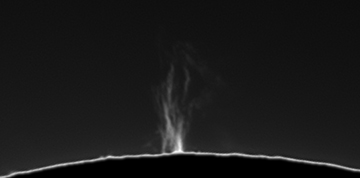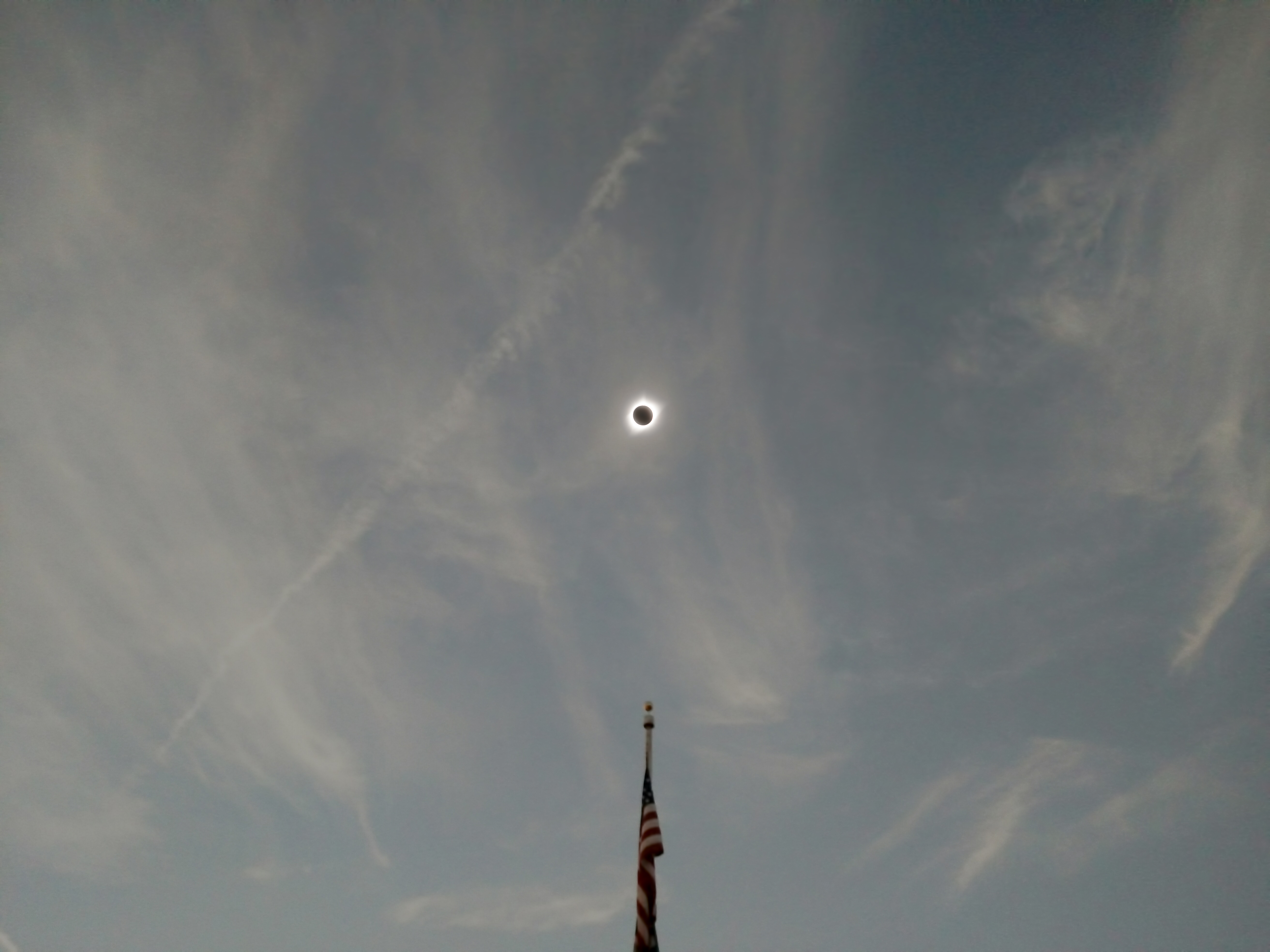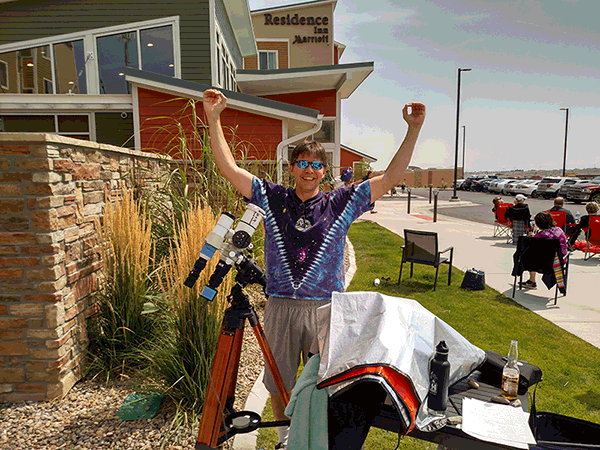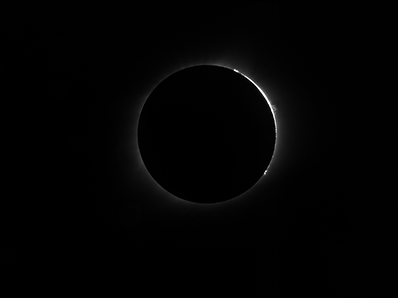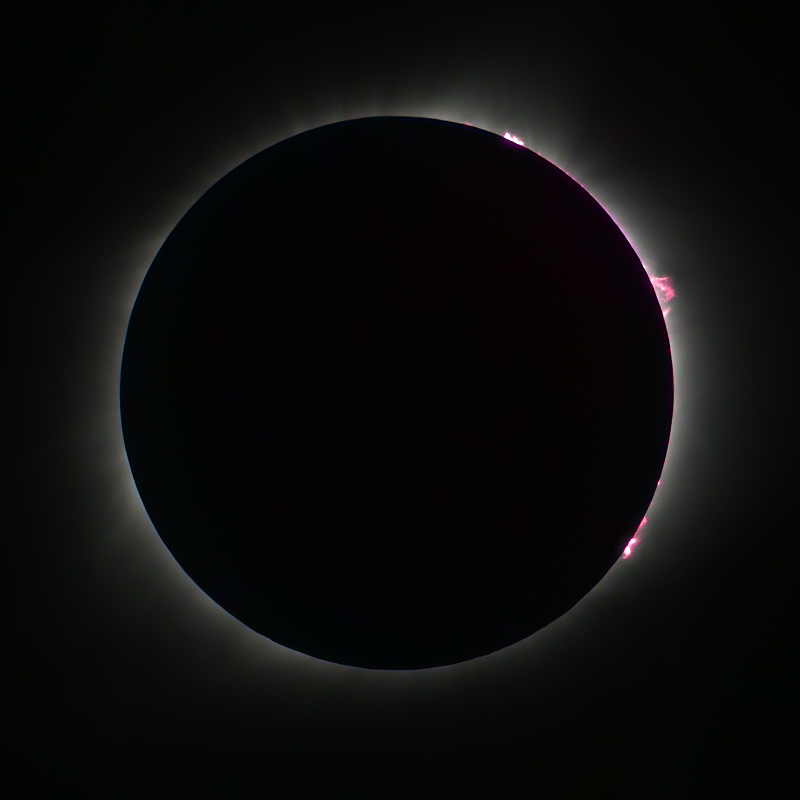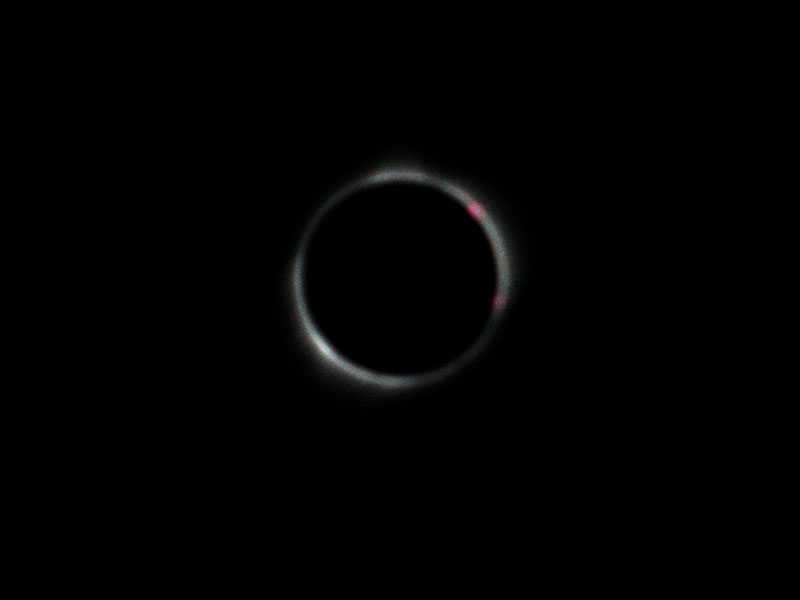digression:
since the human visual system is more accurate for luminance (black and white) than color, one can combine a low resolution color image with a high resolution black and white image without any perceived loss of detail. this phenomenon is often exploited in image printing, processing, recording, display etc. wikipedia link.
applying this concept to eclipse imaging, i had hoped to combine a lower resolution color digital camera image (DSLR) with a sharp black and white image from the telescopic video. as mentioned previously, i blew the focus on my DSLR shot. fortunately, my eclipse neighbor, James Pothier, sent me his DSLR image from the same location and time. Jim and wife Ellen hail from Massachusetts. 7 for 7 eclipse viewers, they set up right next to me at the Residence inn, Casper, Wyoming. I combined the color from his DSLR shot with my black and white image, aligning on the colored prominences and voila:
here's the color applied to my previous composite combining multiple exposures:
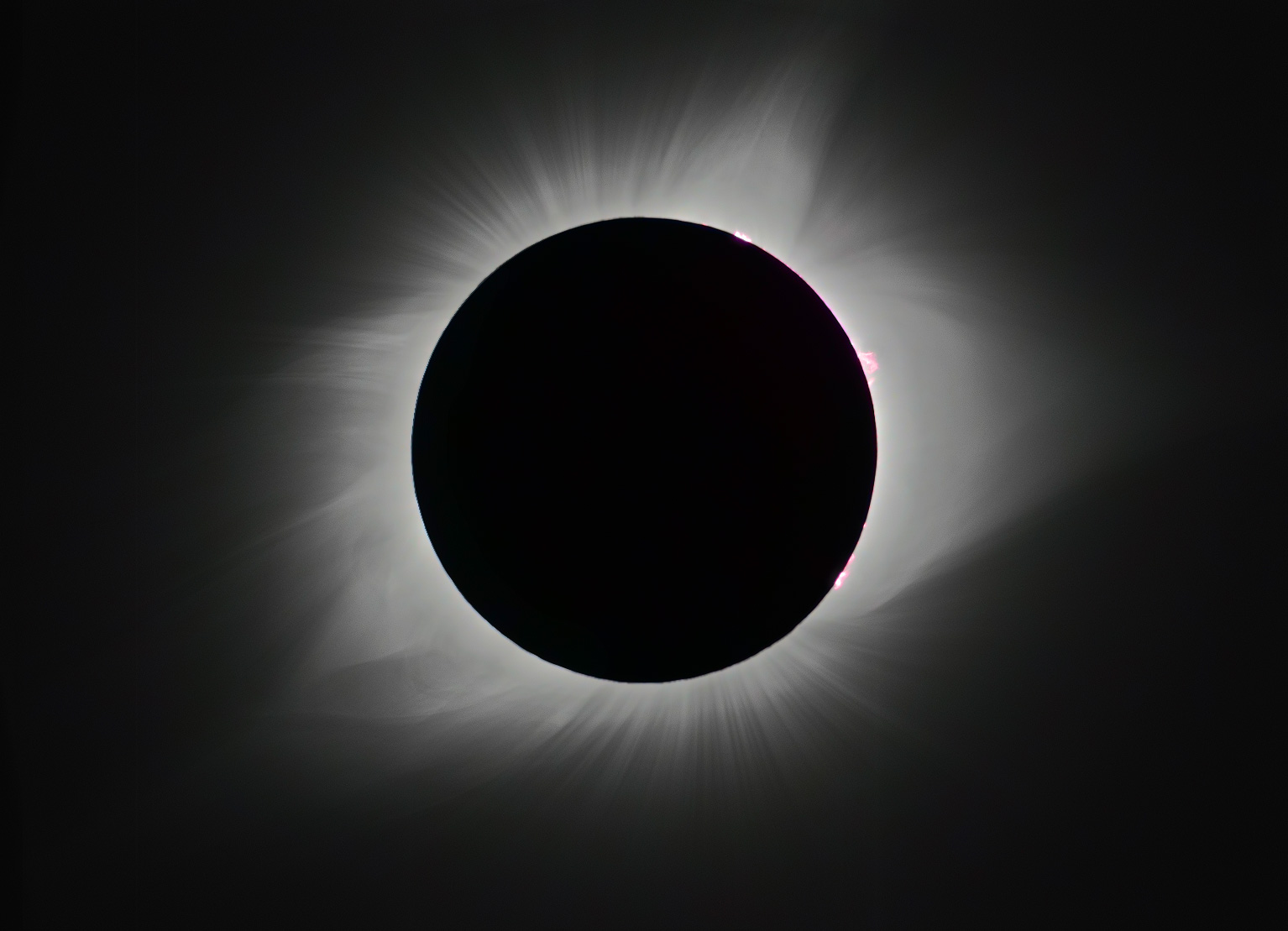 |
| click for full size |
for reference here's my DSLR shot with focus blown (many thanks to the Pothiers):
Image details:
-totality wider field:
Nikon D-60, AF-S DX NIKKOR 55-300mm f/4.5-5.6G ED VR, f/5.6 300 mm 1/20" iso 400
-Pothier image
Nikon D300, f/6.3 ISO 200 1/640 -1step exposure bias 380 mm.
-telescopic view:
DMK 51 web cam, Takahashi FS-60C, 60 mm aperture at f/4.2 with a reducer, 252mm. Skywatcher star adventurer tracking mount. Fotga IR/UV cut filter. The full field of view is approximately 96x72 arc minutes with a resolution of 3.6"/px. video capture at 12 fps, aligned in autostakkert, wavelets in registax.
Casper Wyoming
42,50.9694N 106,15.5688W
8/21/2017
